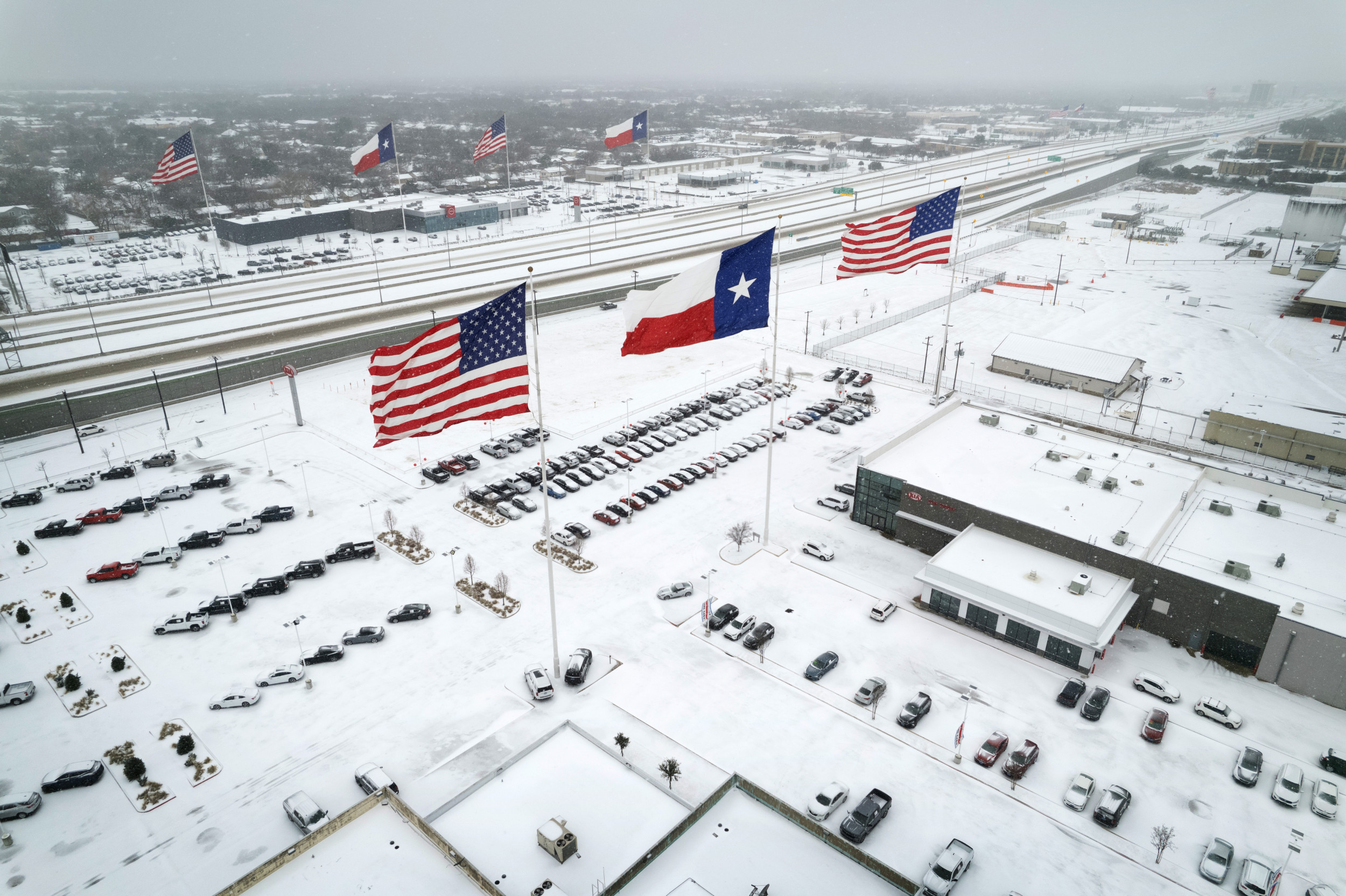Jobs
Trump Wants to Move Federal Jobs Out of the DC Area. Here’s What It Was Like the Last Time He Did That. – Washingtonian

Photo by Britt Reints/Flickr.
Leave your home or lose your job: For at least some of the hundreds of thousands of federal workers in the Washington area, this choice could be reality once Donald Trump returns to the White House. The president-elect has called for relocating as many as 100,000 government jobs to “new locations outside the Washington Swamp,” places “filled with patriots who love America, and they really do love America.”
While Trump has a long history of maximal talk with minimal follow-through, this bark could have bite. For one, as a spokesperson for the Bureau of Land Management told Washingtonian, recent appropriation bill language tweaks have given Congress a direct hand in any potential moves of federal employees—which means once Republicans control both chambers of the legislature next year, they’ll be empowered to carry out Trump’s wishes.
More to the point, Trump already moved federal jobs out of the area during his first term: Bureau of Land Management positions were shifted to Grand Junction, Colorado, while Department of Agriculture roles were sent to Kansas City, Missouri.
To better understand what that was like—and what it augurs for possible future relocation attempts—Washingtonian spoke to workers and union leaders from both organizations. Here’s what they had to say:
“No structure, no thought, no engagement”
For workers in the USDA’s Economic Research Service (ERS, which collects and analyzes agricultural data) and National Institute of Food and Agriculture (NIFA, which turns research into agriculture grants and other action), Trump’s first term brought significant upheaval.
An early budget proposal, later nixed during the February 2018 government shutdown, called for cutting $40 million and 181 staff positions. Next came August 2018 emails stating that both organizations would be moved out of DC.
Roughly a year later, their new home was revealed: Kansas City, Missouri. ERS and NIFA employees went to the USDA’s South Building to express their disapproval, turning their backs to then-Secretary of Agriculture Sonny Perdue in protest.
According to Laura Dodson, acting vice president of Local 3403, the ERS American Federation of Government Employees chapter, workers felt that the relocation decision had been made with “no structure, no thought, no engagement.” Others in the ERS and NIFA say that they were given dubious reasons for moving.
In one meeting on the 7th floor of the Department of Agriculture building that took place shortly after the relocation plan was announced, Dodson says, workers were told it was due to a “high attrition rate” of employees—something Dodson says is “ridiculous, because they were factoring in interns.”
According to Tom Bewick, acting vice president for NIFA’s AFGE Local 3404, workers were told that the move intended to bring them closer to their agriculture and land grant university partners. But Bewick says DC is actually closer to partners such as the University of Maryland and Virginia Tech than Kansas City is to western partners—which meant relocating would make in-person visits more onerous, not less.
In a 2022 study conducted by the US Government Accountability Office, USDA’s stated objectives for relocating the agencies included “attracting and retaining highly qualified staff.” Bewick says many workers concluded that the reason for “moving us all was just because they don’t like federal employees.”
“We were far less productive”
During the first summer of Trump’s first administration, BLM workers gathered for a listening session to share their thoughts and concerns about being geographically redistributed to Colorado. Many were upset.
According to BLM Director Tracy Stone-Manning, one anonymous worker shared that “the potential of moving 2,000 miles away from family and everything I’ve ever known was very traumatic for me, especially since the state I moved to is not known for being very welcoming to African Americans. I also have a number of health issues that the thought of moving somewhere that topped out at around 120 degrees for several months of the year is not appealing. I was very much afraid. In fact, I still am, really.”
Similarly, some USDA workers felt deep trepidation about upending their lives in the DC area in order to relocate. Catherine Greene, who since 1984 had run the ERS division focusing on organic food, farming, and agriculture, didn’t want to go to Kansas City because it would mean moving away from her family, including her adult son and grandchildren. Bewick says that one NIFA worker’s spouse was undergoing chemotherapy when the moves were happening.
In that case, Bewick says, the union intervened—allowing the worker to decide about moving after her spouse’s recovery. She remained in the Washington area, and retired shortly afterwards. Greene also retired.
Neither was an anomaly. Of the 329 ERS positions in Washington, 253 were slated to relocate; of the 315 NIFA positions, 294 were expected to move. Four months after both offices relocated, a government accountability office report found that NIFA had just 105 workers, while ERS had 106 workers. Less than 40 ERS workers and less than 70 NIFA workers actually moved to Kansas City.
The story was similar at BLM. Of the 328 positions marked to move from Washington to Grand Junction, BLM Director Tracy Stone-Manning says, only 41 relocated. Meanwhile, 287 people left the agency.
Across both departments, some of those who didn’t move retired early. Others found new jobs inside and outside the government. Some left their fields entirely. The net result, Stone-Manning says, was an enormous loss of institutional knowledge and capacity: “Hundreds if not thousands of years of experience that walked out the door,” she says. “It’s hard to move past that.”
BLM’s planning shop was hit particularly hard by the brain drain, Stone-Manning says. A “weighty,” “wonky” office that creates public land management guides that can cover “30 years to come,” the shop struggled to get more than “a handful of plans out the door. Many were overturned by the court, because they didn’t follow laws and regulations, and they didn’t because there weren’t seasoned career staff.”
“Losing that expertise and rebuilding it at the same time, it just made it harder for us to do our jobs and that makes it hard to serve the public,” Stone-Manning says.
At ERS, institutional documents and records were lost during the move to Kansas City—when people left, hard drives were rendered “security safe,” meaning they were destroyed. “It was a net loss for our scientific knowledge,” Dodson says, adding that staff attrition harmed the productivity of workers who remained. Research programs were scrapped because no one was in charge. Grants and journal articles languished in incomplete states.
“ERS basically had to go back to start from scratch on a lot of program areas [that] were just lost forever,” says Greene, the longtime organic agriculture economist who retired instead of moving. “Anyone who took the job that I had been doing was going to be hamstrung to some degree just because of the weakening of the agency.”
NIFA’s Bewick moved to Kansas City for six weeks, which he says was “not very pleasant.” Workers were put on half of one floor in their building, and Bewick went from having an office with a small table and chairs—where he could have meetings—to a small cubicle. “A lot of the work we do is contemplative,” he says. “When you’re in a space where a person is on the other side [and] I can hear their whole conversation, it’s very disruptive. We were far less productive in that situation.”
The relocated workers’ new building, Bewick adds, was not in a good part of Kansas City. In a nearby park, he saw hypodermic needles and items related to drug use on the ground; on one occasion, he says, another employee saw two armed people in the parking garage, who brandished their guns at them. After seeing the building, some employees with children decided to work remotely rather than go to the office, even though they had already moved to Kansas City.
While Bewick was home in Virginia, the pandemic hit. He never returned to the Kansas City office. “I’m not going back until someone tells me I have to,” he says.
“A net loss for American taxpayers”
Bewick has been working from home since 2020. Most of his coworkers are, too. During the height of Covid-19 when positions were classified as full-time remote, unions pushed for hiring back in DC and Kansas City. People in Kansas City who kept houses in Washington returned to work from home, and former workers returned to ERS and NIFA because they could be hired in DC or hired remotely.
“If remote work is no longer an option, we’d lose more staff than in another transition from DC to Kansas City,” Dodson says.
Under the Biden administration, Interior Secretary Deb Haaland brought BLM’s main headquarters back to DC, which allowed Stone-Manning and key leaders to return; simultaneously, the Grand Junction building was kept as a “Western headquarters.”
“We’re slowly but surely rebuilding,” Stone-Manning says. “We’re almost back to being fully staffed and serving the public, but we’re still missing institutional knowledge. It’s going to take years and years to build institutional knowledge that we lost.”
NIFA used to be in the top 10 percent of best places to work in the federal government. Now it ranks in the bottom 20 percent. A number of highly effective leaders were lost because of relocation, Bewick says, and “there’s a lot more fear in the workplace now.”
Looking back, Dodson says that the ERS and NIFA relocations were poorly executed. “It was done in a way to punish government employees,” she says. “It was not done in an attempt to be successful. If the point is just to disrupt the function of government, the relocations are a temporary kneecapping of the agency. We suffered needlessly for multiple years. If it’s just being done for the purpose of having federal employees suffer, then I’m at a loss for words. I don’t know how we counter that.”
Dodson adds that the moves didn’t accomplish their stated objectives, nor did they improve service—a warning, perhaps, for future relocation efforts. The Agricultural Applied Economics Association released a report challenging the Trump administration’s claims that the government would save $300 million over 15 years by relocating ERS and NIFA; the findings, cited in this Congressional Research Service report, concluded that the move would actually cost the government between $83 million and $182 million.
“Our experience may have been a trial run for some of these agencies,” she says. “It was a bad experience and net loss for American taxpayers. This was not efficient. This did not save money. This did not make the government more productive.”








